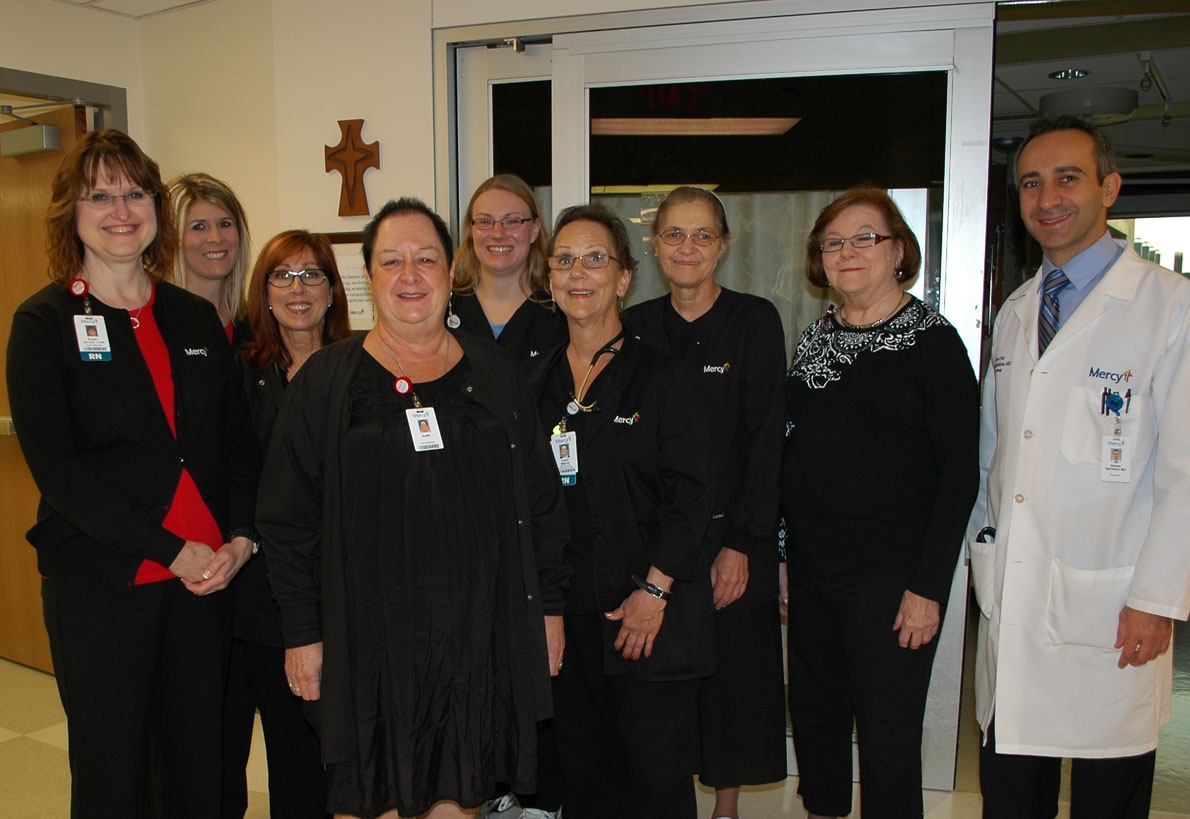

Sadie Tuckness (fourth from left) and her “support team”:
Susan Thomas, Heather White, Debbie Hutchison, Cindy
Cole, Carol Malone, LaVonne Overholt, Billie Nelson and
Dr. Gerard Oghlakian.
By Mercy's Madelynn Innes
For 37 of her 38 years working with Mercy, Sadie Tuckness has been with a team that cares for patients as they’re first recovering from heart surgery. The cardiovascular intensive care unit has successfully treated hundreds of patients who’ve had open heart surgery.Through the years, she says, “I’m amazed by all of the medical advances I’ve seen us do here."
However, Sadie says she tried to ignore her own symptoms of heart failure, fearing that she too would eventually need intensive heart care.
“When you’re in health care, I think it’s easier to ignore your own problems. But I couldn’t deny it any longer – I couldn’t walk 50 feet without getting exhausted.”
Eventually, Sadie’s husband and her co-workers convinced her to see a doctor; her co-workers suggested Dr. Gerard Oghlakian, a founding cardiologist in the Advanced Heart Failure Clinic and one of the first heart failure specialists in Southwest Missouri. “That was last August, and Dr O. told me that I might live five more years if I didn’t change my lifestyle with diet and exercise. I knew he was right: I had to change.”
